Not all dogs are naturally tail-wagging bundles of love. Some puppies are born shy. Other fearful dogs are “made” due to the way that they are raised or treated. You’re not a bad owner if your dog is fearful – but you do have a lot of work ahead of you to help your dog feel comfortable in this world.
Today we’re going to talk about the various reasons you may have ended up with an insecure dog, and how to help a fearful dog gain confidence.
Why is My Dog Scared of Everything?
We often can’t know exactly why your dog is afraid of things.
There’s a pervasive myth that fearful dogs were abused – they often weren’t. This ties into the myth of “it’s all in how you raise them.”
If that myth were true, it would make sense to look for dramatic past experiences that explain fearful behavior. However, many anxious dogs don’t have any puppyhood trauma. So what’s the deal?
1. New Stuff = Scary Stuff
Fearful dogs, more often than not, are afraid of something because they perceive it as new. For adult dogs, new = scary. If your dog was undersocialized as a puppy, she’s more likely to be strongly neophobic.
That’s why puppy socialization is so important – if you teach your puppy that things are normal, they won’t fall into the “Scary New Stuff” category later in life.
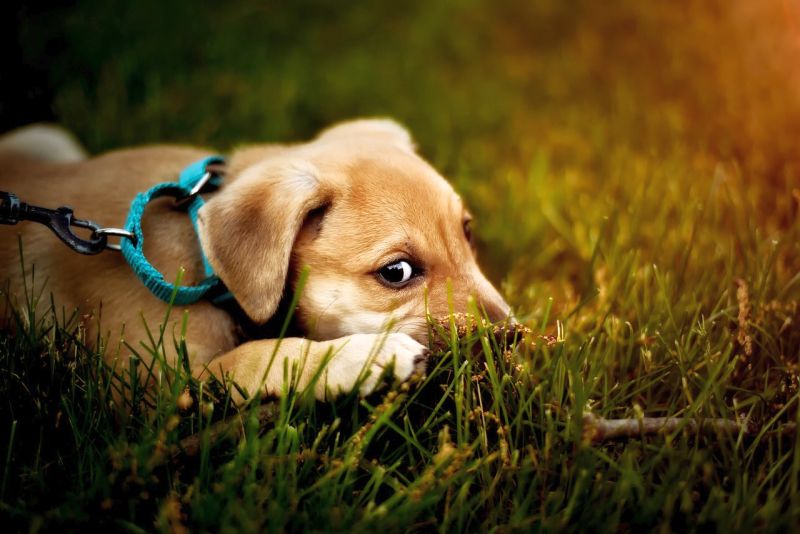
2. Your Dog’s Genetics
Other times, your dog’s genetics are working against you. Poorly-bred dogs and dogs of certain breeds are more predisposed towards being environmentally sensitive. In excess, sensitivity becomes fear.
Likewise, puppies born from a highly stressed mother (like a mother who gave birth in the shelter, a puppy mill, or while a stray) are more likely to be pre-wired for fearfulness.
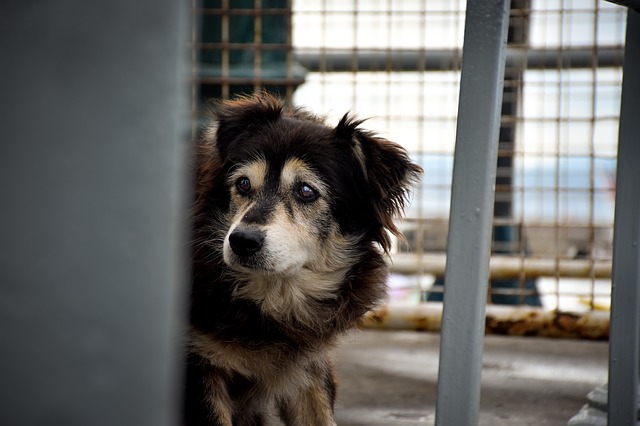
This is evolutionarily advantageous in wild animals – if mom was stressed out while pregnant, there’s a good chance that the pups should be on high alert. But in pet dogs, this can have devastating consequences.
3. Traumatic Past Events
Finally, yes, sometimes we can point to an actual event that caused the fearfulness.
Maybe:
- Your dog was attacked by another dog and now is scared of dogs
- A horrifying thunderstorm happened while you were gone, and now your dog has separation anxiety
- You used a warning beep on a shock collar, and now your dog is terrified of the microwave.
- Your dog was startled by a car backfiring, a gust of wind, or something else and is now scared to even go outside!
In all honesty, it’s not always helpful to spend a lot of time trying to find the root of your dog’s fear. We’re not trying to be Freud, probing deep into your dog’s subconscious. We’re just trying to make her feel better.
Fearful Dog Rehabilitation: How to Help Your Dog
Helping fearful dogs become more confident is a multi-step process that can take weeks, months, or even years. In many cases, it’s never really “done.”
Take an Inventory of What Exactly Your Dog Afraid Of
Working at an animal shelter taught me that no two fearful dogs are the same.
Some dogs are afraid of all people, others seemingly inexplicably fall apart at the sight of just a few specific people. Sometimes a dog is just scared of the stairs or of slippery floors, other times literally the whole world seems like a haunted house to them.
The first step to helping a fearful dog gain confidence is to identify what scares your dog. If your dog seems genuinely scared of the wind and her own shadow, I strongly recommend discussing behavior medication with your vet. It’s just too difficult to help dogs who are really scared all of the time.
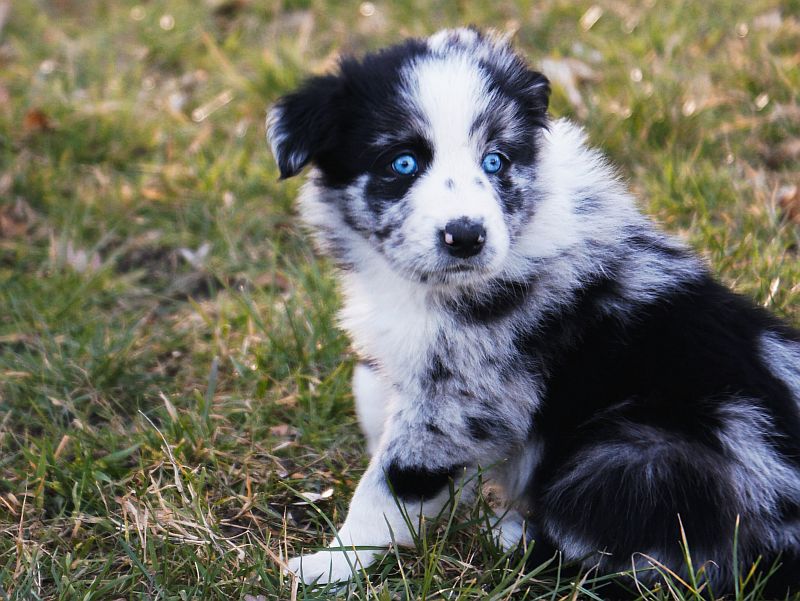
Make a list of your dog’s triggers (what she’s scared of). This is your baseline and your list of mountains to climb.
Your list might include:
- Sounds (like thunder)
- People
- Dogs
- Vehicles
- Moving objects (like bags blowing in the wind)
- Places (like the vet’s)
- Situations (like being surrounded by people)
Try to be specific – is your dog scared of all men, or only men who are attempting to pet her? Is she afraid of all sounds, or only repetitive beeps?
Does your dog show signs of fear indoors as well as outdoors? Some dogs find the outside world in general to be overwhelming (one sign of this is a dog that constantly freezes and stops walking) but are fine inside. Others are scared no matter what their environment is like!
If you’re having a hard time finding a pattern, keep a diary of the times your dog gets spooked. That should help!
What if My Dog Is Afraid Of One Person Specifically?
This problem can be embarrassing and difficult if your dog is terrified of a housemate, friend, or family member. It’s really hard if your dog is scared of someone who lives in your home.
In general, the best course of action here is to have the “scary person” ignore the dog most of the time, averting their gaze and giving the dog space. Whenever they walk past the dog, they can casually toss treats to the dog (see Treat and Retreat, below). Eventually, the dog will learn to trust that this individual isn’t going to hurt them.
The “scary person” can also join on walks or other fun activities. I don’t recommend that the “scary person” become the main walker or feeder at first.
Your goal should be to help the dog learn that “scary person” will respect the dog’s space but also brings awesome stuff to the table.
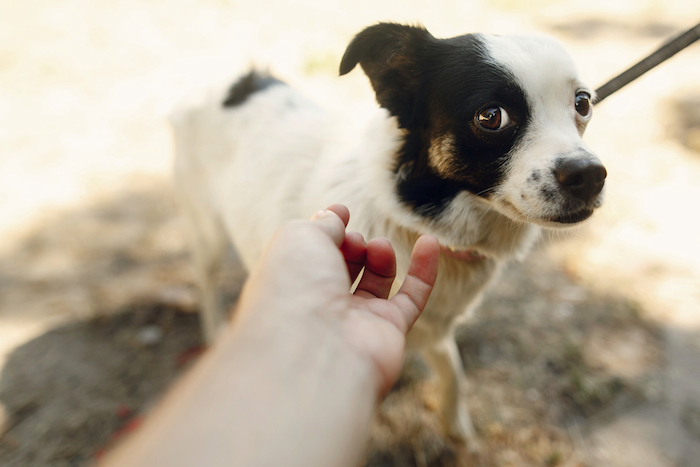
It’s also worth investigating why the dog is scared of a single person. In many cases where the dog is scared of just one person, something happened to cause it.
The person might have dropped a loud pan, stepped on the dog’s tail, or yelled at the dog in a moment of frustration.
If the dog was scared of that person immediately upon meeting the new person, it’s likely that the problem is related back to a deeper problem of neophobia.
Take the Monsters Away!
It’s almost impossible to teach your dog to be more confident if she’s scared all of the time. Now that you know what your dog’s fears are, it’s your job to protect her from them – for now.
That’s because constant exposure to scary things can lead to your dog getting more scared of them, rather than less. Unfortunately, we can’t guarantee that exposing your dog to “monsters” will help her realize that they’re not dangerous. Instead, she might conclude that there are “monsters” everywhere and get even more skittish!
Some methods for keeping the scary things away include:
- White Noise Generators. White noise generators are great tools to help drown out small noises that might startle or upset your dog during the day, like neighbors walking past or car doors slamming.
- Window Film Covers. Window covers can be useful to obscure your dog’s view of the street. Many dogs get stressed out by playing “guard dog” all day, watching the sidewalk through the windows. Your dog can relax a bit if you blur out the outdoors!
- Door Signs. Add signs to your front door warning guests to call before knocking.
- Alter Your Walking Schedule. For dogs who get anxious on walks, consider walking at odd hours and avoid popular parks or walking paths.
When I had fearful foster dogs, sometimes we avoided walks altogether and just did nosework in the backyard. Other times, we took our walks early or on rainy days when no one else was out.
This is incredibly important because learning is impaired when the brain is stressed. You have to take away the scary stuff to truly help your dog!
Canine Calming Tools: Taking Care of Your Whole Dog
Part of reducing stress (taking away the monsters) also means giving your dog ancillary support when needed. Aside from behavior medication, you might want to consider the following supportive measures for your dog:
- Zylkene is one of the best-regarded supplements for soothing nervous dogs. It’s made with milk proteins and is one of the best researched-backed options on this list. It’s supposed to “help promote a sense of calm.”
- Melatonin treats can also help calm a dog down. These chewable tablets help lower cortisol levels, effectively reducing stress levels.
- Composure treats are made from L-theanine and thiamine and help calm your dog down for up to 4 hours after eating the treat. They’re great to help get dogs with mild separation anxiety through the day.
- Thundershirts help calm dogs by applying gentle pressure to their bodies. In a 2014 study on dogs with diagnosed anxiety disorders, a Thundershirt helped lower heart rates and reduce calming signal displays, but did not improve overall behavioral outcomes.
- Calming Caps are head caps that reduce your dog’s visibility, and can help get dogs through difficult scenarios by reducing their exposure to scary visual stimuli. It’s commonly used to help lower stress levels for dogs who get scared at the vet.
Finally, ensure that you’re addressing your dog’s behavioral wellness. There are lot of basic things that are easy to overlook that can have a dramatic effect on your dog’s health, including:
- Exercise. Your dog desperately needs adequate exercise, and it’s shocking how many behavior issues can be remedied through more exercise. Consider longer or more frequent walks, or hiring a friend or neighbor who runs to take you pooch out with them.
- Enrichment. Bored dogs are miserable, and most dogs simply don’t have enough to do during the day. Without something to keep their minds and bodies busy, they can get anxious (many of us can relate). Remedy this by feeding your dog out of puzzle toys, trying canine activity walks, and enlisting other measures to prevent boredom.
- Proper Nutrition. Your dog’s diet can affect everything from her mental state to her coat, nails, and teeth. Talk to your vet about recommended foods, and consider switching to a healthier and higher-quality dog food.
- Communication From You. If your dog doesn’t understand what he can do in order to earn reinforcement (petting, praise, playtime, potty breaks, and dinner), he’s likely to be more stressed-out. Help your dog understand how to earn good things by spending time working on training. One of the best ways to do this it through SMART x 50, where you feed your dog fifty pieces of kibble per day when you “catch him being good.” Your dog will quickly learn which of his behaviors earns him payment!
It’s incredible how much you can help your dog just by thoroughly meeting her needs.
Dog Confidence Building Exercises
Now that your dog is feeling a lot better in her daily life, it’s time to start getting to work on building your dog’s confidence.
Of course, you’re probably already seeing improvements simply because your dog is less stressed.
This means that if she does see her former triggers, she’s more likely to react with grace and confidence.
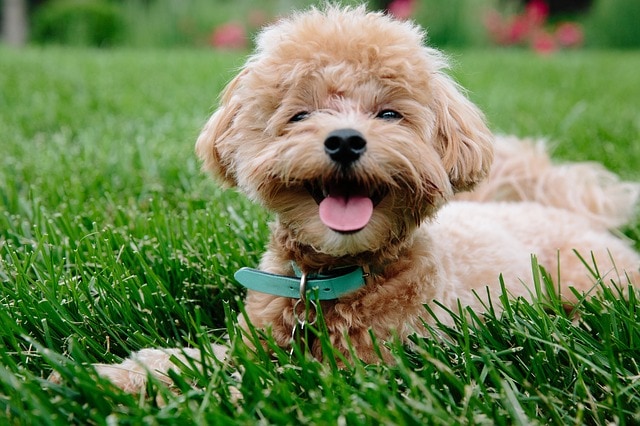
Luckily, there are lots of confidence building exercises for dogs that are actually fun to train.
The key with all of these games is that they should be fun and easy for your dog. If your dog is getting stressed, you’re pushing too hard. Just make it a bit easier.
In some cases, you might have to get creative.
Here’s a common example: your dog panics at the sight of another dog, even if that other dog is a football field away. How do you make it easier?
In this example, I’d suggest having the dog walk through a field after another dog played there. Expose her to the scent first. You can also introduce her to the sound of another dog’s collar or another dog’s bark (using a recording like the Train Away App).
Get help from a good dog trainer if you really get stuck!
Without further ado, here are some of my favorite dog confidence building games.
1. Free Shaping: For Truly Terrified Dogs
When a dog is truly “shut down” and doesn’t seem to do anything other than tremble, it can feel hopeless. These dogs will really benefit most from a dog behavior consultant and/or veterinary help.
In the meantime, free shaping is one of the only ways to help these ultra-anxious dogs open up.
Step 1. Leave your dog where she’s most comfortable – even if that is a closet or a crate. Kneel with your side to her. If she’s not totally comfortable with your presence, give her as much space as you can.
Be prepared with some tasty treats, like shredded cooked chicken breast. Use a pen to click (put it in your pocket if that sound makes her flinch). Clicker training is great for fearful dogs because it eliminates extra information (your voice).
Simply use a quiet clicker to “mark” the precise second that your dog does something you like (in this case, literally anything). The click lets your dog know a treat is on its way.
The video below shows how to get started teaching your dog to associate clicks with treats:
Step 2. If your dog does anything at all – rolls her eyes towards you, raises an eyebrow, shifts, sighs, lifts her head, re-tucks a foot – click and gently toss a treat to her. Be sure to use a backhanded flick rather than an overhanded lob to avoid startling her.
Step 3. Keep it up, clicking and treating for any movement at all. Keep sessions very short and try to keep your rate of reinforcement high.
Over time, you’ll start noticing that your dog has more confidence to just “behave more.” She’s learning that moving and doing stuff can pay off. This is difficult, long, slow process – be patient.
Step 4. Eventually you can start selectively rewarding your dog for lifting her head, moving towards you, or even engaging with her environment.
2. Engage-Disengage: Meeting the Triggers
This game is the bread and butter of helping fearful dogs gain confidence.
It goes by many different names for slightly different variations in how it’s played – Look at That is another common name of the game. It was popularized thanks to Leslie McDevitt in her book, Control Unleashed.
Play this game by setting up a careful training scenario where you know exactly how intense your trigger will be. This might mean being across a large parking lot from the vet clinic if your dog is scared of other dogs, or using an app to mimic the sound of quiet thunder rolling.
It’s best if you can control the trigger – this game backfires if the scary stranger tries to approach and pet your dog.
- Step 1. Allow your dog to notice the trigger. If she fixates on the trigger, barks, whines, tries to run away, or won’t eat, you’re too close. Step 2. As soon as she notices the trigger, click or say “good” and then offer a tasty treat. Repeat. Keep training sessions short and easy.
- Step 3. Over time, you’ll be able to move closer to the trigger (or make the trigger louder, if it’s sound based).
I like to add an extra layer to this game – after a few repetitions of clicking when your dog looks at the trigger, instead click when your dog reorients to you.
You can even start training around the trigger – this is the “advanced” level of the game because it really asks your dog, “Can you listen around the scary thing?”
If your dog can’t focus on you, that’s ok. Just reset to make it easier, take a break, and try again.
For a quick visual reminder of how to play this game, check out this graphic from Choose Positive Dog Training.
Here’s a video of K9 of Mine founder Meg working on engage / disengage with her dog Remy.
3. Treat and Retreat: Moving Closer to Triggers
This game is one of my favorites, but it’s only suitable for dogs who can already be within about 10 feet of their triggers.
There are two main ways to play. One is geared towards dogs who are scared of people, one is for dogs scared of everything else.
For dogs who are scared of people, you’ll need to get a helper person. That helper will keep their eyes low and keep their side to the dog rather than facing head-on. If the dog looks at them or approaches them, the helper will toss a treat behind the dog (treat) so that the dog turns back to get the food (retreat).
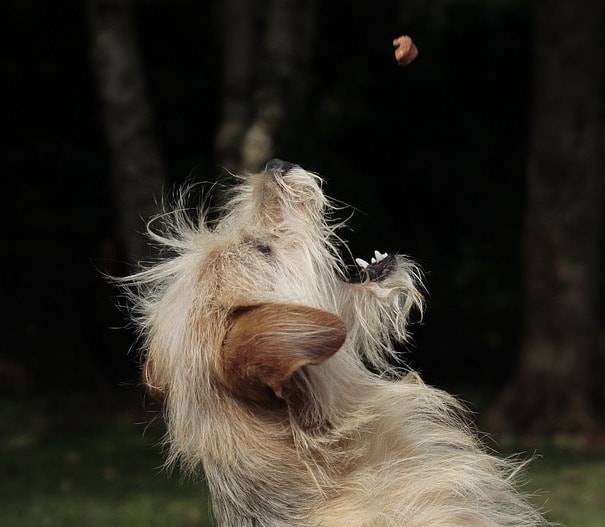
This game teaches dogs that strangers produce treats without pressuring the dog to get too close. It also teaches the dog that moving away from scary stuff is a good idea, which is helpful in preventing bites.
This game is far better than luring a dog towards a stranger for treats. There’s no social pressure and the dog should never get close enough to get scared.
For dogs who are scared of other stuff, this game starts looking a lot like engage-disengage. As you click and reward your dog for looking at the scary thing, though, you’ll now also turn away from the scary thing and reset.
This also allows your dog to move away and collect the treats, then choose whether or not to approach. Your job is to reward if they get closer to the scary thing, but not lure them closer.
Signs of a Confident Dog: What Does Success Look Like?
It’s important to manage your expectations when training fearful dogs.
Many really fearful adult dogs will never transform to extremely confident dogs. You can help teach them that scary stuff isn’t so bad, but they’re unlikely to totally make the switch.
Some dogs are just going to be jumpier and more anxious than others – you can help support them, but don’t expect your dog to go from terrified of strangers to being a therapy dog. This sort of thinking can really lead you to pushing your dog too hard, too fast and can even backfire.
That’s not to say that a shy dog can’t be a happy dog. But there are degrees of fearfulness, and your expectations will need to change based on how scared your dog is in general.
Training fearful dogs generally takes place on the timescale of months and years, not hours and days. Some extremely fearful dogs really blossom – but it generally takes years of hard work to get there.
Every owner will have a different goal for their dog. When I adopted Barley, he was a bit nervous about strangely-shaped people (wheelchairs, crutches, big backpacks, umbrellas, trekking poles, floppy hats, etc).
My goal was to be able to pass people like this on the street or on the trail calmly. I didn’t need Barley to go say hi – I just needed him to be able to pass politely.
Your goals will be different.
In general, we always want to aim for your dog to look and feel confident in as many day-to-day situations as possible.
A confident dog will have:
- A relaxed tail carriage. This is breed-dependent. A Greyhound’s low-slung tail is normal, but the same tail carriage would indicate serious fear if seen in a Husky.
- Relaxed ears. Again, this will differ based on breed. But your dog shouldn’t have tension in the base of his ears.
- Relaxed, even breathing. Hyperventilating, stress panting, and holding breath are all signs of nervousness.
- Calm, alert eyes. Staring off into space or directly at something isn’t a sign of a relaxed dog.
- Well-centered body weight. A fearful dog will carry herself low and may have her weight shifted backwards. Comfortable dogs will carry their weight evenly.
- Willingness to engage with you and the environment. Confident dogs are curious and willing to check out their world.
This last point is probably my main goal when working with fearful dogs. I want to teach scared dogs that the world won’t hurt them, and that if they explore it they’re likely to find great stuff.
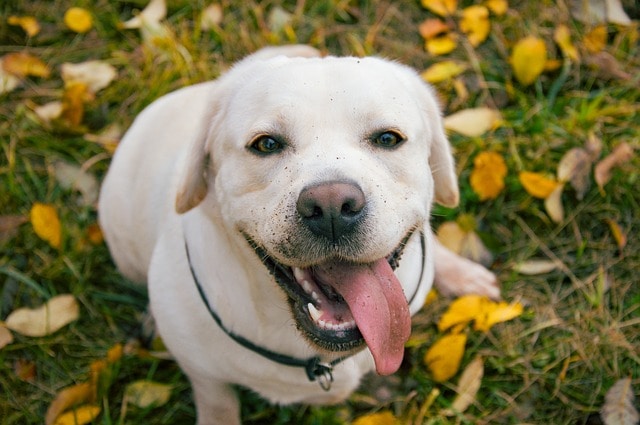
Be sure to define and redefine what success will look like for you and your dog. It’s ok to aim high if you ensure that you don’t pressure your dog.
It’s tempting to try to drag your dog into new situations until she “gets over it,” but this is called flooding and often backfires.
Be patient and trust the process. Get help if you need.
Have you ever had to deal with a low confidence dog? What other advice do you have for owners of fearful dogs? Share in the comments!
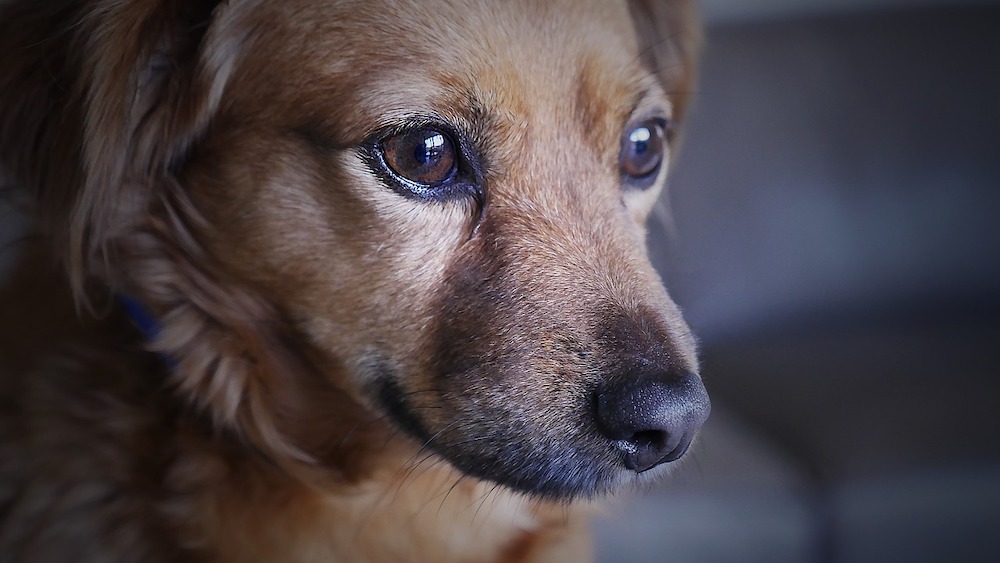




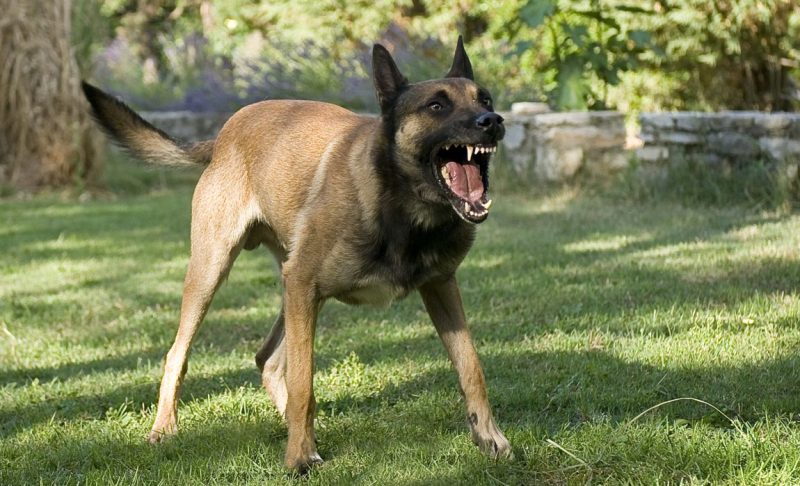
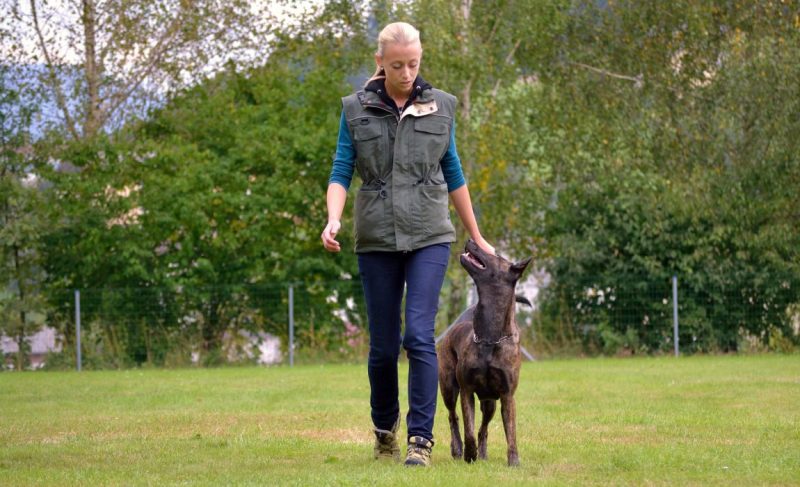

Leave a Comment